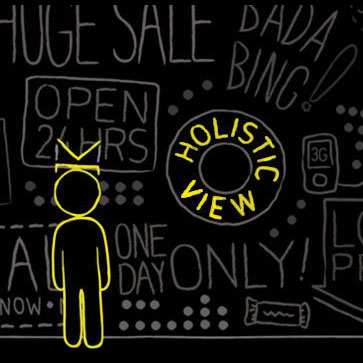Can You Profit From Pay-Per-Call?

 Display advertising is on the ropes, search engines frown upon text links and the FCC has a few choice words about sponsored posts. Why is everyone trying to keep affiliates down? They aren't... really. What you as an affiliate do have going for you is that networks and merchants are innovating, and looking beyond traditional affiliate models towards solutions like Pay-Per-Call. But how can you leverage that as an affiliate to turn a profit?
Display advertising is on the ropes, search engines frown upon text links and the FCC has a few choice words about sponsored posts. Why is everyone trying to keep affiliates down? They aren't... really. What you as an affiliate do have going for you is that networks and merchants are innovating, and looking beyond traditional affiliate models towards solutions like Pay-Per-Call. But how can you leverage that as an affiliate to turn a profit?
Affiliate Networks are jumping on the Pay-Per-Call bandwagon left and right. Back in early August, Linkshare opened its Pay-Per-Call service. Commission Junction followed suit and now also offers a similar program. Just today, ShareASale is the latest to formally provide a Pay-Per-Call program and is doing so for all of its 2500 merchants (after an exclusive beta).
"Pay-per-call offers a great new revenue opportunity for both merchants and affiliates," said ShareASale CEO Brian Littleton in a press release issued earlier. "Affiliate marketing is no longer just online. Consumers who were more difficult to reach in a purely online environment are now a new audience for affiliates to target. The system is simple to set up, easy to use, and integrates with a merchant's traditional online initiatives."
But therein lies the problem; how does a traditionally online affiliate move offline and monetize their efforts through Pay-Per-Call programs? While there might be opportunity in offline thanks to less competition, you've invested heavily in the Web realm - so why not make the most of it.
The ShareASale Pay-Per-Call program (powered by RingRevenue - the same vendor powering CJ) already features more than 30 pay-per-call campaigns available to affiliates (some with commissions as high as $50.00 per-call). Clearly the merchants are hungry for the traction and are willing to pay a premium to get new customers. What is often missing for affiliates is how they might actually use Pay-Per-Call to generate profit online. Why does no one really discuss best practices when it comes to the Pay-Per-Call model? Because it's so much more complicated than placing a few banners on your website.
Let's slow down a bit and discuss how Pay-Per-Call works. Advertisers create pay-per-call campaigns, then approved publishers are provisioned phone numbers that they can use in both online and offline campaign ads. When a consumer calls the provisioned number, the call is routed, connected, and tracked by the pay-per-call system. Phone call activity and payouts are then reported in the respective advertiser and publisher accounts.
In any successful advertiser/publisher relationship you need two things - an advertiser looking to acquire a lead/sale and an entity (an affiliate) to provide that lead. Perhaps the best idea for leveraging the surge of Pay-Per-Call activity is through local online directories. Since a significant share of advertisers and merchants in the ranks of Pay-Per-Call are local merchants - from attorneys to plumbers - it only makes sense that a local Web portal or directory would be a good fit. But where should you begin - or should you begin at all?
Pay-per-call for as long as I can remember has been called the next evolution of lead generation. In reality, it's never, ever taken off. But what's behind the influx of networks adopting providers like RingRevenue - is there hope for that business and advertising model yet? Don't hold your breath. As in all things - affiliates (publishers) drive traffic and unless you buy in the whole idea may just be hot air.
Is Pay-Per-Call the next big thing for affiliate marketers?
Share your thoughts in the Website Magazine forum.









